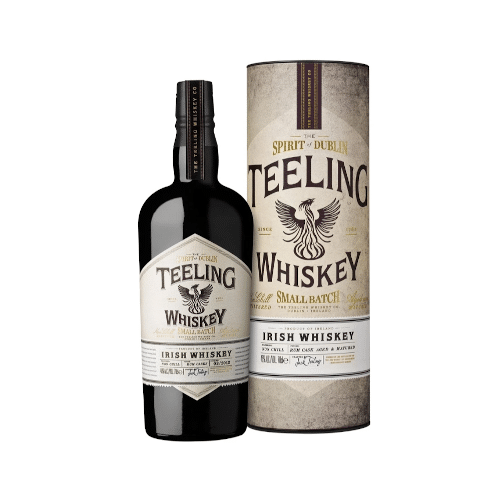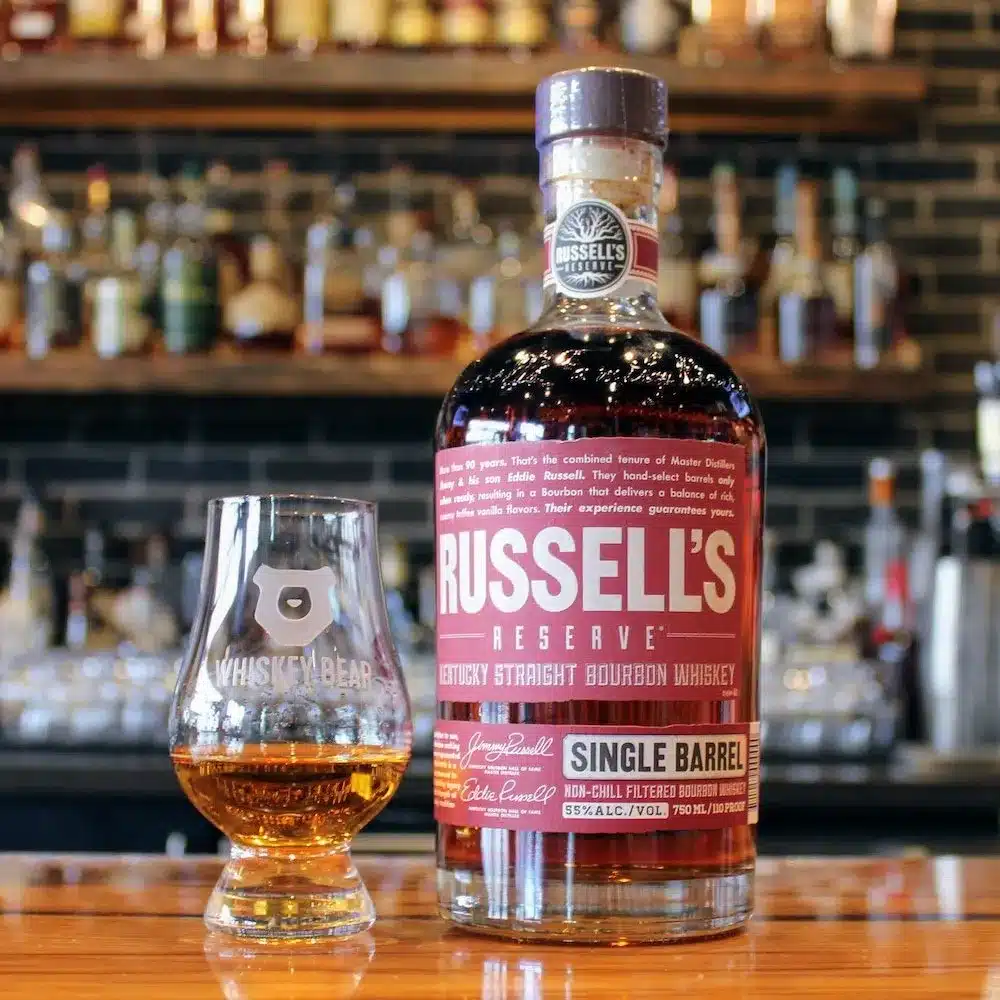The main difference between Irish Whiskey and Bourbon is where they’re made. Irish whiskey hails from Ireland, while bourbons are distilled in the United States. After their origins, subtle differences between the two whiskeys give them their distinct tastes and followers.
Another interesting difference between Irish whiskey and bourbon is the “e” in whiskey. It is always present in Irish whiskey. But you may find bourbons listed without it, like this “whisky.”
Bourbon tastes more sweet than Irish whiskeys thanks to its high corn content. Think in terms of corn syrup if you’re wondering why corn gives a sweet taste. While bourbon doesn’t always come from Kentucky, the state does produce top-quality spirits. And that’s because it has cool winters and hot summers.
The state’s temperature variations cause the charred oak barrels to soak up and then release the alcohol during the aging process. So bourbon gets much of its taste and amber color from the cask itself.

Bourbon vs Irish Whiskey Comparison Chart
| Irish Whiskey | Bourbon | |
|---|---|---|
| Where They’re Made | Ireland | America |
| Flavors | A blend of Malted and Unmalted Barley | ≥51% Corn Mash |
| Taste | Light and Smooth | Sweet and Dense |
| Distillation Process | Triple Distilled and Aged in Used Bourbon or Sherry Barrels for 3+ Years | Aged in New Charred Oak Barrel 2-4 Years |
Many types of whiskey (or whisky) exist, and while they have many similarities, you’ll find some differences too. First, however, there are rules for producing most whiskeys.
For example, bourbon is one type of whiskey. But not all whiskeys are bourbons. So if you order whiskey at a bar thinking you’ll automatically get bourbon, you may be in for a surprise. That would be similar to ordering vegetables in a restaurant, thinking you’ll always get broccoli.
Whiskeys are made from a mash of fermented grains like rye, barley, wheat, and corn. Next, they age in wooden casks, generally charred oak. Whiskey differs from wine in that it doesn’t further mature in the bottle. Instead, all aging happens in the wooden container before bottling.
What is Irish Whiskey?
Distilled in Ireland from a combination of unmalted and malted barley, Irish whiskey has a smooth and rich taste. The addition of other grains like wheat and rye promotes complexity in this rich spirit.

Irish whiskey ages for at least three years in new or mature oak casks often reused from bourbon, rum, or sherry distilleries. Especially these aged containers impart a sweet caramel flavor to Irish whiskey, similar to how they contribute to bourbon’s color and taste.
Its signature malty smoothness comes from a triple distillation process. Irish whiskey is bottled at 40% alcohol by volume (ABV) or higher (usually between 40-60%), and its smooth taste makes it perfect for sipping or mixing into an Irish coffee.
Irish whiskey is popular worldwide and for good reason. Rules of its production date back to the Spirits Act of the 1800s. But the more recent Irish Whiskey Act of 1950 states these conditions.
- Irish whiskey must be distilled from a mash of malt and cereal grains within Ireland.
- Irish pot still whiskey is distilled solely in pot stills within Ireland from malted barley and cereal grains grown within the country.
More on Irish Whiskey: Best Cheap Irish Whiskey
What is Bourbon?
Bourbon is a whiskey that is only made in the United States, often in Kentucky, where you’ll find some fantastic distilleries. Additionally, according to the Department of the Treasury, Alcohol & Tobacco, some of Bourbon’s characteristics (or rules) are here.
- It must contain 51% or more corn. Other allowed grains are wheat, malted barley, and rye.
- Bourbon must age inside new, charred oak barrels.
- When it goes into the barrel, bourbon is stored at not more than 62.5% alcohol by volume.

The alcohol by volume (ABV) requirement means the bourbon starts at 125 proof. Then after aging, the whiskey is bottled at an 80-proof minimum (40% ABV.)
The difference in ABV comes from the addition of water to the bourbon. Some makers dilute the drink so it tastes better if consumers drink it straight or neat. But, of course, if you’re mixing a Manhattan or other cocktail, you might not notice the slight difference in smoothness that the water adds.
Using a new oak barrel gives bourbon its vanilla notes. And charring the barrel brings out the caramel flavors like brown sugar and a hint of toffee.
So you can see the importance of rules clarifying the types of grains and barrels in which bourbon (and Irish whiskey) is made and aged. They make a significant difference in the style of alcohol produced.
Luckily, the rules only apply to bourbon production rather than to how you drink it! So enjoy a glass neat, on the rocks, or in a cocktail. We count it all good when you’re drinking this All-American spirit.
Which One is Better?
Irish whiskey is often described as smooth and oaky with a hint of caramel from aging. It is also lighter than bourbon with a slightly fruity taste.
Conversely, Bourbon is a mahogany-colored alcohol with a mildly nutty flavor profile and a mellow sweet taste.
Which is better depends on your preferences, so we suggest having your own tasting after reading this article. Then you can better understand the reasons behind the proclamations of “This one is best!”